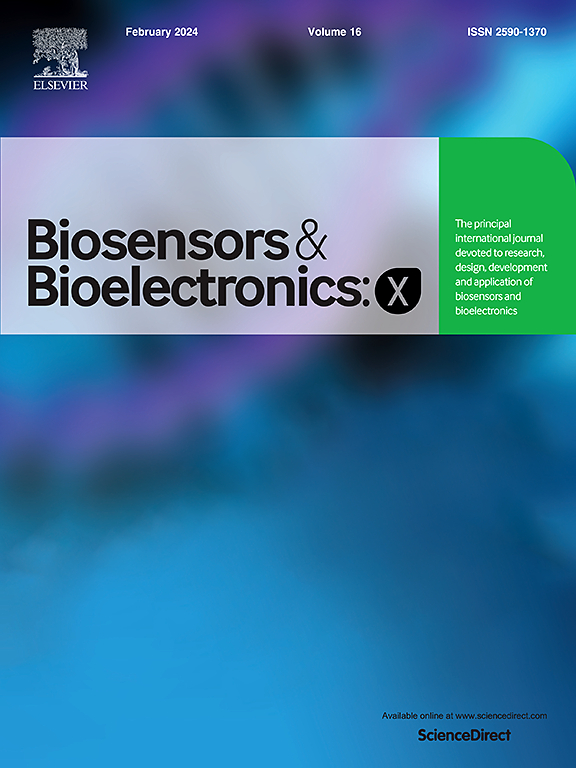用于生物传感应用的场效应晶体管,使用石墨烯通道和富胺涂层
IF 10.61
Q3 Biochemistry, Genetics and Molecular Biology
引用次数: 0
摘要
由于石墨烯具有独特的能带结构,价带和导带在一个称为狄拉克点的点上相互接触,这使得它对掺杂、外电场、机械变形等环境非常敏感。因此,它是非常理想的传感应用。然而,它的表面惰性带来了显著的缺点。因此,有必要对石墨烯表面进行处理以结合生物分子。在本文中,我们报道了利用等离子体聚合的胺功能化石墨烯来检测基于液门场效应晶体管(LG-GFET)的石墨烯通道中生物分子的存在。以链霉亲和素和生物素为例,通过监测Dirac点的位移来检测链霉亲和素-生物素复合物的结合相互作用。通过改变链霉亲和素的浓度从0.1 nM到1000 nM,我们发现我们的LG-GFET的检测能力低至0.1 nM。该方法具有检测限低、灵敏度高、稳定性好等优点。本文章由计算机程序翻译,如有差异,请以英文原文为准。
Field-effect transistor for biosensing applications using a graphene channel with amine-rich coatings
Since graphene has a unique band structure with the valence and conduction bands touching each other at a single point called the Dirac point, this makes it extremely sensitive to the surroundings such as doping, external electric field, mechanical deformation, etc. Hence, it is very desirable for sensing applications. However, its surface inertness poses significant drawbacks. Therefore, it is necessary to treat the graphene surface to bind biomolecules. In this paper, we report the use of amine-functionalized graphene by plasma polymerization to detect the presence of biomolecules in graphene channel based on a liquid-gate field-effect transistor (LG-GFET). Taking streptavidin and biotin as an example, the binding interactions of streptavidin–biotin complexes are detected by monitoring the shift of the Dirac point. By varying the streptavidin concentrations from 0.1 nM to 1000 nM, we found that our LG-GFET achieves detection capabilities as low as 0.1 nM. Our approach can be applied for the detection of biological molecules with low detection limit, high sensitivity, and stability.
求助全文
通过发布文献求助,成功后即可免费获取论文全文。
去求助
来源期刊

Biosensors and Bioelectronics: X
Biochemistry, Genetics and Molecular Biology-Biophysics
CiteScore
4.60
自引率
0.00%
发文量
166
审稿时长
54 days
期刊介绍:
Biosensors and Bioelectronics: X, an open-access companion journal of Biosensors and Bioelectronics, boasts a 2020 Impact Factor of 10.61 (Journal Citation Reports, Clarivate Analytics 2021). Offering authors the opportunity to share their innovative work freely and globally, Biosensors and Bioelectronics: X aims to be a timely and permanent source of information. The journal publishes original research papers, review articles, communications, editorial highlights, perspectives, opinions, and commentaries at the intersection of technological advancements and high-impact applications. Manuscripts submitted to Biosensors and Bioelectronics: X are assessed based on originality and innovation in technology development or applications, aligning with the journal's goal to cater to a broad audience interested in this dynamic field.
 求助内容:
求助内容: 应助结果提醒方式:
应助结果提醒方式:


